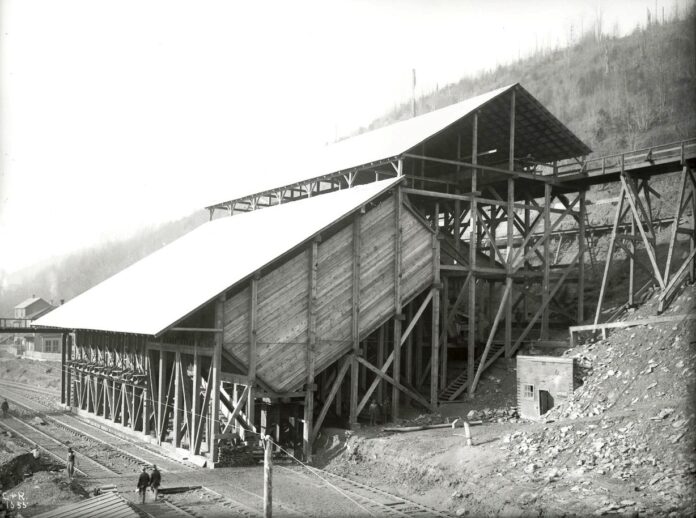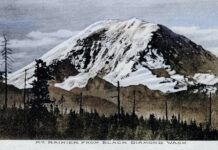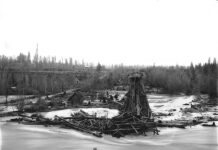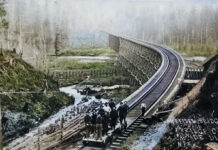Franklin was developed for coal mining and operated as a company town from 1885 to 1922. Franklin’s purpose was linked to 53-million-year-old coal seams discovered by Victor Tull in 1882. The town was named after Benjamin Franklin.
The Oregon Improvement Company in cooperation with the Black Diamond Coal Mining Company induced the Columbia & Puget Sound Railroad to extend tracks all the way from Renton. The railroad reached Franklin in early 1885 with the first coal shipped to Seattle in June.
Franklin’s early years were dominated by labor strife and mining disasters. In 1891, African-Americans from Missouri and Illinois were given free train tickets to travel west for jobs, only to discover they were imported strike-breakers. Violence soon erupted and the National Guard was deployed following two violent deaths. Unionization efforts collapsed and some blacks left town, but many stayed working beside white miners. Three years later, on August 24, 1894, a tragic fire claimed the lives of 37 miners. It was the second-worst coal mine disaster in Washington state history.
In 1896, the Pacific Coast Company purchased the town making new investments and increasing production. Eight years later Pacific Coast acquired the Black Diamond mines. Coal mining in Franklin expanded and by the late 1890s and early 1900s coal production was averaging nearly 200,000 tons per year. Its peak population was 1,100. However, after 1908 coal output slumped and employment fell to less than 150 miners.
The Cannon Mine on the Gem seam opened around 1912 and became the town’s last. It closed in 1922, not with a bang but a whimper. Several small mines attempted coal recovery in the mid-1930s but were unsuccessful. Later mining efforts were undertaken during World War II but generally failed. In 1948, Palmer Coking Coal Company obtained leases to mine Franklin’s numerous coal seams by surface and underground methods. Palmer’s efforts prospered, and in 1953 the company purchased all the King County property and mineral holdings of Pacific Coast Coal Company. Palmer continued underground mining until 1971 and surface operations on Franklin Hill until 1981.
Over the nearly a century of operations, Franklin produced 4.15 million tons of coal, at a cost of 88 recorded fatalities. Daniel S. Carey, a Black Diamond resident was Franklin’s last coal mine death. He was crushed in the Franklin Gem mine on November 21, 1942, when a large chunk of bony coal fell on him.
In 1973 Washington State Parks acquired most of the old town site, vertical mine shaft, and historic cemetery as part of the Green River Gorge conservation area. In 1983, Green River Community College conducted an extensive historical and archaeological project under the direction of Gerald Hedlund and assisted by Mark Vernon. Their efforts produced a 1994 book, “From Smoke to Mist” an archeological study of Franklin, Washington.
This Feb. 19, 1902 view of a Franklin coal bunker for storing and loading coal was taken by the famous photography team of Asahel Curtis and William Romans. The small figures in the lower left corner are two men walking along the Columbia & Puget Sound Railroad tracks, while two others work nearby. This photo number 1055 comes courtesy of the Washington State Historical Society in Tacoma, WA.







